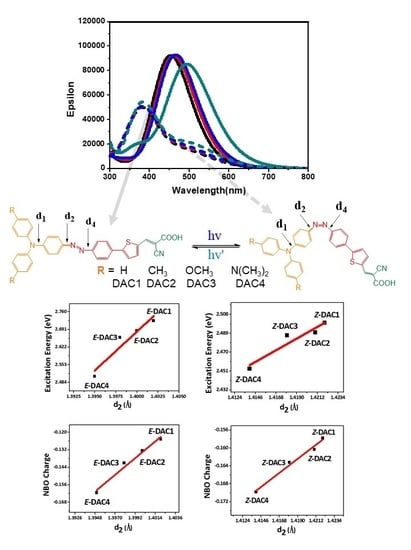Computational Investigation of Tuning the Electron-Donating Ability in Metal-Free Organic Dyes Featuring an Azobenzene Spacer for Dye-Sensitized Solar Cells
Abstract
Share and Cite
Rashid, M.A.M.; Hayati, D.; Kwak, K.; Hong, J. Computational Investigation of Tuning the Electron-Donating Ability in Metal-Free Organic Dyes Featuring an Azobenzene Spacer for Dye-Sensitized Solar Cells. Nanomaterials 2019, 9, 119. https://doi.org/10.3390/nano9010119
Rashid MAM, Hayati D, Kwak K, Hong J. Computational Investigation of Tuning the Electron-Donating Ability in Metal-Free Organic Dyes Featuring an Azobenzene Spacer for Dye-Sensitized Solar Cells. Nanomaterials. 2019; 9(1):119. https://doi.org/10.3390/nano9010119
Chicago/Turabian StyleRashid, Md Al Mamunur, Dini Hayati, Kyungwon Kwak, and Jongin Hong. 2019. "Computational Investigation of Tuning the Electron-Donating Ability in Metal-Free Organic Dyes Featuring an Azobenzene Spacer for Dye-Sensitized Solar Cells" Nanomaterials 9, no. 1: 119. https://doi.org/10.3390/nano9010119
APA StyleRashid, M. A. M., Hayati, D., Kwak, K., & Hong, J. (2019). Computational Investigation of Tuning the Electron-Donating Ability in Metal-Free Organic Dyes Featuring an Azobenzene Spacer for Dye-Sensitized Solar Cells. Nanomaterials, 9(1), 119. https://doi.org/10.3390/nano9010119





